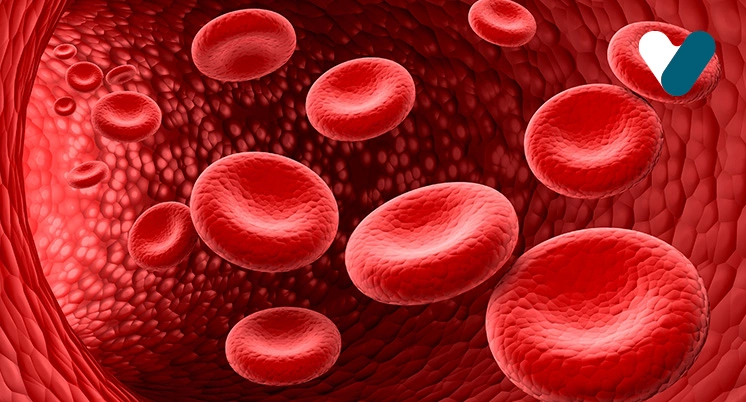Pneumonia is a pulmonary infection that causes the air sacs to be filled with fluid and pus. When the air sacs are blocked, exchange of oxygen and carbon dioxide gets affected. Bacteria, viruses and fungi are generally attributed as pneumonia causes. If you are exposed to a hospital environment – whether as a frontline worker or as a patient admitted for another illness, you can contract pneumonia as well.
The common symptoms of pneumonia include cough with phlegm, shortness of breath, chest pain, nausea, mental confusion, tachypnoea and more. Many people who are infected do not realise they have pneumonia. Due to similar symptoms, pneumonia can be mistaken for a common cold. Proper medication and diet can help treat pneumonia. You can fully recover from the lung infection with recovering times ranging from two weeks to a month or more.
What Happens When You Contract Pneumonia?
Various defence mechanisms in the respiratory system keep pathogens like bacteria, virus and fungi from reproducing and infecting the body. When your immune system is suppressed, these pathogens, reproduce excessively. The excessive reproduction of the pathogens in the supressed immune system, in turn, disrupts the defence mechanisms in the body, becoming the primary cause for lung infections like pneumonia.
In the case of pneumonia, the germs in the upper regions of the respiratory track, spread to the airways and air sacs. The white blood cells produce antibodies that localise to the infected area. The hair-like structures called cilia are present along the airway walls. They produce excess mucus to trap the germs.
The cellular debris from the antibodies form pus and get accumulated in the air sacs along with other fluids. Since air sacs are responsible for exchange of oxygen and carbon dioxide, you may typically experience breathing difficulties. The excess mucus in the airways mixes with cellular debris and sloughed-off inflammatory cells. It is expelled from the body in the form of sputum (spit).
Pneumonia infects the body in various stages, and the illness and recovery period may differ from person to person. During this time, the body exhibits various symptoms. These symptoms can be mild or severe, depending on your health, age and lifestyle choices.
Causes of Pneumonia
When irritants enter the airways and air sacs, they become inflamed. The common Pneumonia causes include the following.
• Bacteria
Bacteria is the most common cause of community-acquired pneumonia (CAP). CAP is contracted from pathogens outside of a hospital environment. Streptococcus pneumoniae (S. pneumoniae) is the common bacteria that causes bacterial pneumonia. Typically, S. pneumoniae is part of the human microbiome and is present in the upper respiratory tract.
Under the right conditions, the naturally occurring bacteria becomes pathogenic. This happens when the immune system gets weak due to other health conditions. The S. pneumoniae colonise the alveoli (air sacs) of the lungs. The body stimulates an inflammatory response to fight the infection. In this process, white blood cells, plasma, blood and other debris accumulate in the air sacs. The pneumonia caused by S.
pneumoniae is known as pneumococcal disease. Other common cause of CAP includes Haemophilus influenza, Pseudomonas aeruginosa, Klebsiella pneumoniae, etc.
You can get infected with bacteria present in a hospital environment as well. This is called hospital-acquired pneumonia (HAP). Here, the bacteria are stronger and more resilient to treatment. Therefore, HAP can get severe quickly. Methicillin-resistant Staphylococcus aureus (MRSA), Pseudomonas aeruginosa, antibiotic-resistant Enterobacteriaceae along with CAP bacteria are causes for lung infection acquired in a hospital.
When bacteria are hard to detect via standard methods, they are called atypical bacteria. They respond differently to antibiotics and appear different on imaging tests. Common atypical pneumonia-causing bacteria include Chlamydophila pneumoniae, Mycoplasma pneumoniae and Legionella pneumoniae.
Contaminated air and water systems, crowded places, exposure to certain animals and birds, etc., can cause bacterial pneumonia, which is generally deemed highly contagious. Through coughs and sneezes, the infected person can expel droplets of bacteria that can infect other people. Bacterial pneumonia can get complicated in adults as well as children. Complications may include respiratory failure, sepsis, empyema or lung abscess.
• Virus
Different types of viruses are also the known pneumonia causes among the young and elderly alike. Viral pneumonia can occur if the pathogen directly implants itself in the lungs. The influenza and respiratory syncytial virus (RSV) cause direct inoculation. If there is an infection like measles in the upper respiratory tract, it can spread to the airways and air sacs as well. Non-respiratory viral infections may also cause viral pneumonia.
The virus targets the inner linings of the air sacs. It causes inflammation, microhaemorrhage and a cellular immune reaction. The white blood cells initiate a cascade of immune product secretion. It can cause capillary permeability and oedema (puffiness due to excess trapped fluid). Complications can lead to interstitial pneumonia (multiple lung diseases), cardiogenic shock and pulmonary oedema.
Common viral pneumonia-causing agents include rhinovirus, influenza A, B and C viruses, human metapneumovirus, etc. Coronavirus, measles, cytomegalovirus (CMV), hantavirus, adenovirus, parainfluenza virus type 1, 2, 3 and 4, etc., can also cause viral pneumonia.
Pneumonia caused during a coronavirus infection can lower the oxygen levels in the blood.
Reduced oxygenated blood can lead to respiratory failure. Infection occurs in both lungs and causes breathing complications. The influenza virus, responsible for the flu season, is pretty common across the world. However, contracting pneumonia with an influenza virus infection can sometimes be fatal. Individuals with pre-existing cardiopulmonary conditions are at a greater risk of developing severe pneumonia. If you have a viral pneumonia, you may contract bacterial pneumonia as a secondary invasion. Viral pneumonia can spread from person to person.
• Fungi
Another cause for lung infections, Fungal pneumonia is non-contagious and caused by fungi like yeast or mould. Fungi are present almost everywhere. You can find them in soil and decaying vegetation. Therefore, the respiratory system's exposure to fungal organisms in quite common. The virulence of most fungi is low. Your intact immune system can easily prevent them from colonisation. Some fungi have high virulency that infects even the healthiest of people.
When you inhale spores, fungi enter the lungs. If other organs are infected, the fungi can make their way to the lungs through the bloodstream. The fungi enter the air sacs and can also travel between adjacent air sacs. This fungi invasion stimulates the immune system to localise white blood cells to the infected region. Cellular debris released due to the chemical reaction between white blood cells and the fungi fill the air sacs. This causes pneumonia and subsequent symptoms like impaired oxygen transportation and chest pain.
Cryptococcus neoformans and Trichosporon are common fungal pneumonia-causing agents found in yeast. Common fungi found in moulds include Absidia, Rhizopus, Aspergillus, Trichoderma, etc. Some fungi can exist as both mould and yeast. They include Coccidioides immitis, Blastomyces dermatitis, Histoplasma capsulatum and Pneumocystic jiroveci.
Pneumocystic jirovechi causes a serious fungal infection called pneumocystis pneumoniais.
It occurs in individuals who are immunocompromised. Immunocompromised means a weak immune system which can be due to Human Immunodeficiency Virus and Acquired Immune Deficiency Syndrome (HIV/AIDS). People who have had organ transplants or are undergoing cancer treatment require immunosuppressants. Such people are also at a greater risk of developing fungal pneumonia.
Hospital-Acquired Pneumonia Causes
One of the severe forms of pneumonia is the one you contract during hospitalisation. It is called HAP or nosocomial pneumonia and occurs 48 hours after hospitalisation. Ventilator-associated pneumonia (VAP) is a sub-set of HAP that occurs in patients admitted to intensive care units (ICU).
S. pneumoniae, Staphylococcus aureus, MRSA, Haemophilus influenza, Pseudomonas aeruginosa and other gram-negative bacteria can cause HAP. Hospital pathogens are more dangerous than the ones responsible for community-acquired pneumonia. They are also more resistant to treatment. HAP can be spread by healthcare workers as well. They can transfer germs from their clothes or hospital instruments into the patients.
Causes of Aspiration Pneumonia
Pneumonia caused by inhalation of non-air substances is called aspiration pneumonia. Substances include saliva, food, liquid and other smaller foreign objects. The swallowed food that is supposed to enter the oesophagus (food pipe) and stomach, enters the windpipe and irritates the lung airways. Aspirated fluids may contain oropharyngeal secretions. Individuals hospitalised for CAP treatment are at a higher risk of developing aspiration pneumonia.
When an individual is less alert due to certain medication, they may accidentally breathe food or liquid into the lungs. Individuals under the influence of alcohol or illicit drugs have reduced brain functions. Their poor gag reflexes may cause them to inhale non-air substances. Unconscious or semi-conscious patients after a brain injury need assistance ingesting food. However, due to their poor gag reflexes, the food may enter their wind pipe.
The type of pathogen that causes aspiration pneumonia depends on your health as well as your locality. Recent hospitalisation, type of medication and weak immune system are factors that can influence the aspiration pneumonia-causing pathogen.
Causes of Parasitic Pneumonia
Parasitic pneumonia is a rare lung infection caused by parasites. It occurs in individuals who have a weakened immune system. The parasites enter the body via the skin or if you accidentally swallow them. Common parasites include Ascaris, Toxoplasma, Schistosoma, etc.


